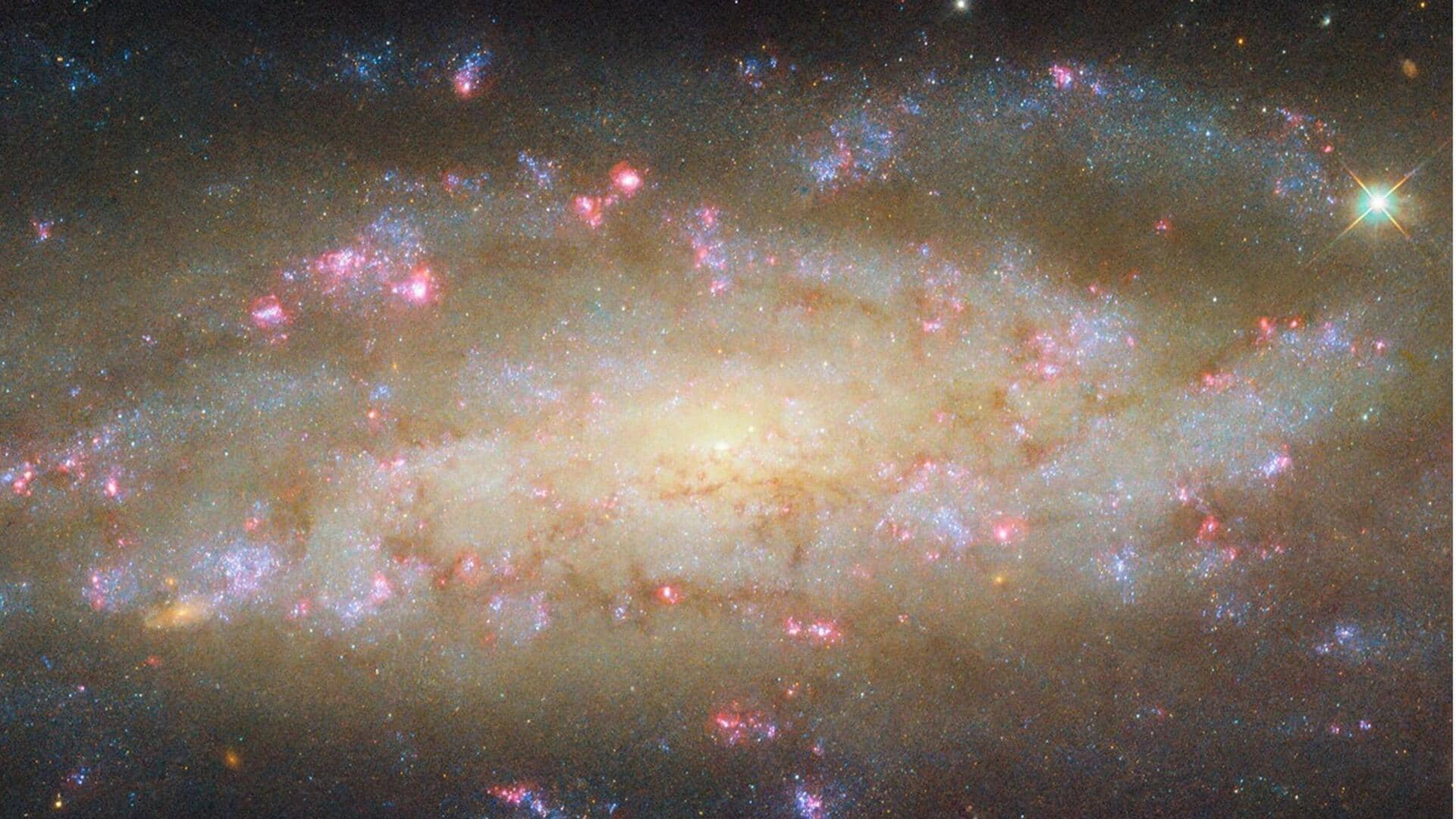Delve into Cosmic Inflation: Unveiling the Universe's Genesis. Explore the mind-bending origins of our cosmos. Read more!
For ages, humankind has gazed at the night sky, wondering about the very beginning
– how did everything start? Modern science proposes a mind-boggling idea called "cosmic inflation" as a key part of answering this very question about the origin of our universe.

It proposes what happened moments after the big bang. Let's understand more about it.
Cosmic inflation theory explains rapid early universe expansion
Essentially, cosmic inflation is a theory, suggesting a period of extremely rapid expansion in the very early universe. Think faster than anything we can imagine. This happened a tiny fraction of a second after the Big Bang.

During this brief but powerful period, the universe exploded in size, growing from smaller than a subatomic particle to roughly the size of a grapefruit almost instantly.
Some scientists also believe and give examples to back up that it might not necessarily be the size of a grapefruit but other sizes as well. The question is not of the size but the huge, instant increase.
This incredible growth spurt shaped the universe we see today, influencing the distribution of galaxies and the overall structure of space itself. Without inflation, the universe might be entirely different, perhaps not even capable of supporting life as we know it.
Strong evidence for cosmic inflation from CMB supports universe creation theory
The evidence supporting cosmic inflation is quite strong. The key piece of evidence comes from observing the Cosmic Microwave Background (CMB). The CMB is the afterglow of the Big Bang. It's like the echo of the universe's creation, a faint radiation that fills the sky uniformly from any direction.
Careful measurements of the CMB reveal tiny temperature fluctuations, and these fluctuations are incredibly uniform across the sky. Inflation provides a compelling explanation for this uniformity.
It suggests that these tiny differences in temperature in the primordial universe became the seeding spots for galaxies, stars, and everything else, as the universe expanded and cooled.
Measurements from space missions like the Planck satellite have provided strong evidence that aligns with inflation theories and the predictions made using them. This offers a very good, precise picture of the early moments.
Inflation solves horizon problem by rapid expansion
Inflation also tackles the "horizon problem". The horizon problem questions why distant regions of the universe at opposite ends of the observable universe have the same temperature. These regions are so far apart that they should never have been in contact.

So how did they reach the same state of cosmic equilibrium? Inflation solves this by proposing that these regions were once much closer together, allowing them to interact and reach that same temperature before inflation rapidly separated them.
It's like saying the entire dough for your roti was once perfectly uniform, then stretched out very quickly. That ensures that the end-product remains similar even when it gets greatly enlarged. Inflation simply stretches out a small, causally connected region, which provides the same solution.
Models of inflation, inflatons, CMB, and black holes shape cosmic theories
While the evidence for inflation is robust, several models try to explain the specifics of how inflation occurred and the kind of physics involved. These models often involve hypothetical fields called "inflatons" which drove the expansion.

Different inflation models predict different properties for the early universe, leading scientists to search for specific fingerprints in the CMB and the distribution of galaxies, or even the formation of primordial black holes, which are very small and formed at the beginning of time.
Finding those fingerprints would help identify which model of cosmic inflation is more accurate. It's a journey to reconstruct the tiniest fraction of a second that decided the fate of everything that followed. It tells us why, for instance, there's more matter than antimatter too.
Cosmic inflation links cosmology and particle physics
Cosmic inflation isn't just theoretical. It connects to cutting edge research in particle physics. Understanding inflation requires understanding physics at extremely high energies.
These energies are far beyond what we can create in our current labs, leading to exciting connections between cosmology and particle physics.
Physicists believe that studying inflation can provide insight into the fundamental forces of nature and can even help in the search for new particles and fields. Inflation helps us bridge the gap between the very large and the very small.
From how the universe expanded to how this expansion may reveal the true nature of reality in general.
Ongoing cosmic inflation study reveals universe's early moments
The study of cosmic inflation is an ongoing adventure, driving advancements in our understanding of the universe. Future telescopes and experiments will probe the CMB with even greater precision.
Moreover, by doing more experiments, we can search for signs of gravitational waves generated during inflation. This would offer even stronger evidence. At the same time, we will be building extremely sensitive detectors to listen for these faint ripples.
These gravitational waves would carry information about the energy scale of inflation. This will give us a glimpse into the universe’s earliest moments. It is through careful observation and theoretical modeling that we can reveal the details of this mind-boggling theory.
This theory seeks to explain what happened at the dawn of time, answering some very fundamental questions about our existence and the nature of all things.
AI Generated Content. Glance/InMobi shall have no liability for the content








